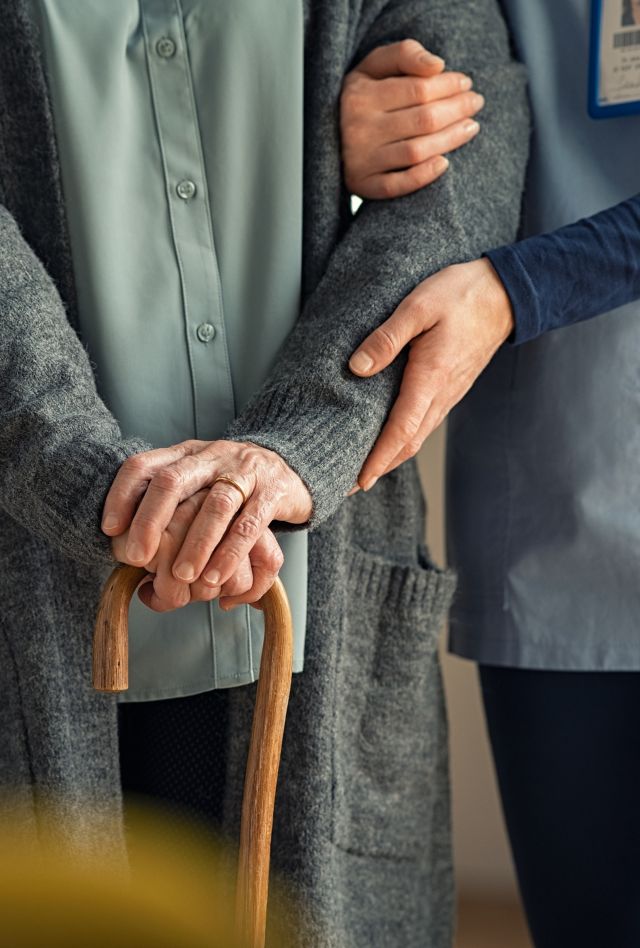NIC-NORC Senior Housing Research Portfolio

Problem
The conditions that affect the vulnerability and longevity of people in senior housing have historically been understudied.
Understanding the health and housing needs of America’s aging population requires additional research. Three areas are particularly important:
- Vulnerability: Senior housing and care operators have historically lacked sufficient understanding of the vulnerability levels of their residents. Further understanding can help indicate where active management of chronic conditions and functional needs could protect older adults from adverse health outcomes.
- Longevity: Older adults and their families have lacked comprehensive research on the longevity and quality of life of older adults in senior living communities. Further research is needed to explore if residents of senior housing have lower mortality rates and greater longevity than seniors who live in non-congregate settings.
- Health Outcomes: Senior housing residents and care operators lack information on the quality of care and health outcomes of older adults in senior living communities. Further understanding of outcomes of older adults in senior housing can assist operators in yielding better outcomes for their residents.
Solution
NORC is conducting cutting-edge research into the health and housing needs of older adults.
The National Investment Center for Seniors Housing & Care (NIC) contracted NORC to conduct three research activities to shed new light on the conditions that impact senior housing:
- Vulnerability to Adverse Health Outcomes: Using a novel claims-based frailty index, NORC examined frailty as a risk predictor. Physical frailty (or vulnerability to adverse health outcomes) is a key issue among senior housing residents and a common reason for moving into a senior housing community.
- Longevity: NORC conducted a comparative analysis of mortality, days away from home due hospitalizations and skilled nursing stays, and preventative and rehabilitative health services days to understand the impact of senior housing on the length and quality of older adults’ lives. Longevity holds significant importance for older adults and their loved ones. Older adults and their families opt for senior housing as option to support their holistic healthcare needs and enhance their overall quality of life.
- Health Outcomes: NORC conducted a comparative analysis of senior residents’ health outcomes relative to their non-congregate peers to determine if residing in a senior housing community improves quality of life for older adults. NORC measured the frequency of emergency department (ED) visits, hospital inpatient stays, hospitalizations for physical injury and/or falls, and select Prevention Quality Indicators (PQIs) for COPD, hypertension, dehydration, community-acquired pneumonia, UTIs, and uncontrolled diabetes.
Result
Our results shed new light on the frailty and longevity of older adults in senior housing.
Our analysis informs strategies to improve older adults’ housing and health care. Among our findings:
- Upon moving into senior housing, vulnerability increases for a short period as residents settle into their new community before leveling off and showing improvement. Vulnerability to declining health outcomes, as defined by “frailty levels” of residents, is highest in communities with the most intensive support services.
- On average, senior housing residents experience greater longevity than the non-congregate comparison group in the first two years following move-in across all but one measure, overall and by setting. Furthermore, senior housing residents receive more preventative and rehabilitative care in the first two years following move-in than community-dwelling peers.
- On average, older adults who recently moved into private pay senior housing experienced the same or better outcomes across a variety of quality measures than their matched non-congregate peers. These findings suggest that senior housing operators have been effective in managing resident clinical risk, even during the transition to senior housing—a particularly vulnerable time for older adults.
Related Tags
Project Leads
-
Dianne Munevar
Vice PresidentPrincipal Investigator
Key Project Staff
Tyler Oberlander
Project Director
Claudia Gorman
Project Manager







